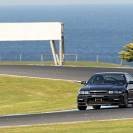Announcements
-
Similar Content
-
Latest Posts
-
Candid connections: Platform for casual relationships Authentic Maidens Supreme Сasual Dating
-
I would absolutely be starting with this idea over all other possibilities. It sounds f**ked.
-
By Dose Pipe Sutututu · Posted
Lighting in the shed looks real good! Not lying, have shed envy lol. Maybe one day I can fk off from Metro Sydney. -
By Dose Pipe Sutututu · Posted
I would be cautious with those 2000/2200 CNG injectors, swap them out for a set of 1550 aka 1650 Bosch stainless ones before you take out a motor.





Recommended Posts
Create an account or sign in to comment
You need to be a member in order to leave a comment
Create an account
Sign up for a new account in our community. It's easy!
Register a new accountSign in
Already have an account? Sign in here.
Sign In Now